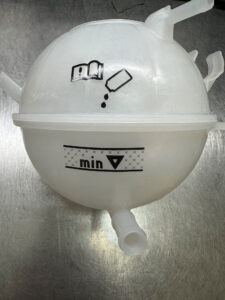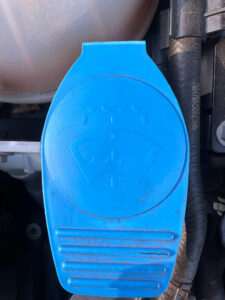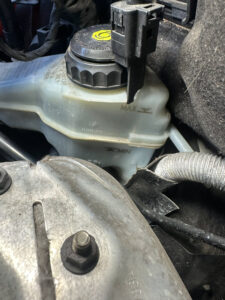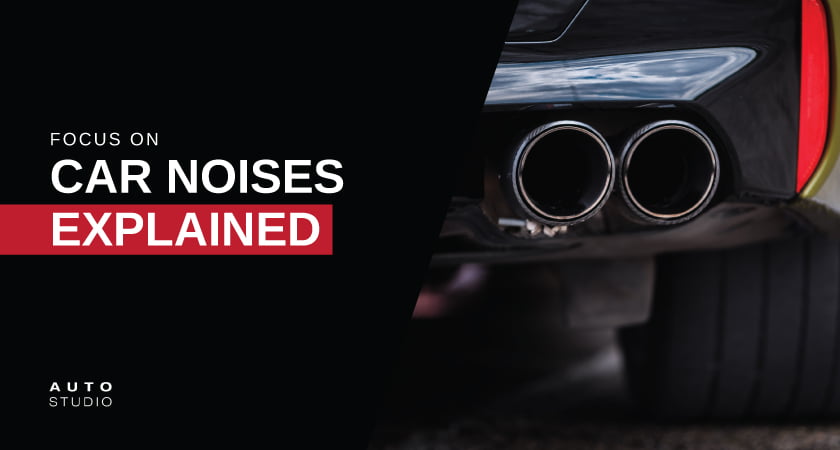
How To Check Fluid Levels In Most Volkswagen Cars
In this handy guide, our expert Adelaide Volkswagen mechanics will guide you through how to check different fluid levels in most Volkswagen cars. Please note: for the purposes of this walkthrough, we’ve used a VW Golf Mk6 as a case study.
Start by familiarising yourself with the location of the various fluids as well as the dipstick:

It’s also important to know where the min and max lines are on your dipstick:

Engine Oil
On most Volkswagens, anything associated with the engine oil is usually marked as a bright orange or yellow colour.
To check the engine oil level, the vehicle must be switched off and parked on a level surface to get an accurate reading. If the engine has been running prior to checking, it’s best to check the oil once the engine has been allowed to sit for a couple of minutes.
Remove the dipstick and use a cloth to wipe it as it’s removed—this is important because if it’s removed and checked straight away, it will show an inaccurate reading. Reinstall the dipstick all the way until it clips in then remove it again. The oil level should be sitting in the top of the hatched area of the dipstick for its maximum level, or within the hatched area. If it is at the bottom or below the hatched area, the oil level is too low.
If the oil needs to be topped up, clean around the oil cap with a cloth for any debris and remove the oil cap. Don’t pour large amounts of oil in at a time. Most oil top-up bottles have gradients of 100mLs on the side of them. Only pour up to 100mLs at a time, and allow a few minutes before checking the level again on the dipstick as it takes time for the oil to settle.
Once the level is correct, clean up any spilt oil in the filler cap area and refit the cap. Don’t forget to fit the dipstick!
Coolant

To check the coolant level, make sure your Volkswagen is on a level surface. With the bonnet opened, check the coolant reservoir to see if the coolant is between the minimum and maximum lines. Most of the time, the system will be under pressure and the level might drop slightly compared to when there is no pressure in the system.
The system shouldn’t require frequent topping up, but if it is required only use either distilled water or the approved coolant (generally, the coolant used in most VW vehicles is pink in colour).
If the vehicle is hot DO NOT REMOVE THE CAP, as the system is under pressure so can cause injury if the cap is removed. Allow the vehicle to cool first before removing the cap, then top up as necessary. If frequent topping up is required, you may have a leak in which case we’d recommend bringing your VW to our team of Adelaide Volkswagen mechanics for inspection.
Washer Fluid

The washer fluid reservoir is normally identified by its blue cap. This reservoir can be topped up with water.
Importantly, only use approved windscreen washer additives in these systems as if, for example, you use a dishwashing detergent or similar then you run the risk of causing the system to sludge up and become blocked.
Washer fluid doesn’t normally have a minimum or maximum level, so top it up until it’s at the top.
Brake Fluid

Brake fluid level will decrease over time due to the brake pads wearing. Topping up brake fluid can be a little tricky however, as it sits right at the firewall. To help, a clean funnel can be used to top it up—but only use approved brake fluid. In general, the correct brake fluid will be shown on the reservoir cap (e.g. DOT 4).
Start by removing the reservoir cap and wrapping it in a clean cloth. DON’T SPILL BRAKE FLUID ON PAINT WORK, as brake fluid will destroy paint. If any fluid is spilt, refit the reservoir cap and wash the fluid off immediately with clean water.
Using a funnel, or the brake fluid top-up bottle, fill the reservoir until it reaches the max line. Before refitting the cap, ensure the area is clean of dirt and debris and that any spilt brake fluid is also cleaned off.









